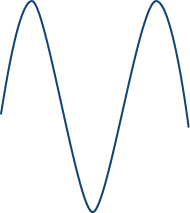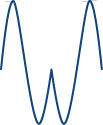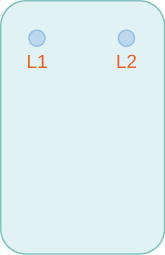| << Chapter < Page | Chapter >> Page > |
A common misconception is that two wave pulses traveling in opposite directions will reflect off each other. Outline a procedure that you would use to convince someone that the two wave pulses do not reflect off each other, but instead travel through each other. You may use sketches to represent your understanding. Be sure to provide evidence to not only refute the original claim, but to support yours as well.
Answers vary. Students could include a sketch showing an increased amplitude when two waves occupy the same location. Students could also cite conceptual evidence such as sound waves passing through each other.
Two wave pulses are traveling toward each other on a string, as shown below. Which of the following representations correctly shows the string as the two pulses overlap?





A student sends a transverse wave pulse of amplitude A along a rope attached at one end. As the pulse returns to the student, a second pulse of amplitude 3 A is sent along the opposite side of the rope. What is the resulting amplitude when the two pulses interact?
(d)
A student would like to demonstrate destructive interference using two sound sources. Explain how the student could set up this demonstration and what restrictions they would need to place upon their sources. Be sure to consider both the layout of space and the sounds created in your explanation.
A student is shaking a flexible string attached to a wooden board in a rhythmic manner. Which of the following choices will decrease the wavelength within the rope?
(c)
A ripple tank has two locations (L1 and L2) that vibrate in tandem as shown below. Both L1 and L2 vibrate in a plane perpendicular to the page, creating a two-dimensional interference pattern.

Describe an experimental procedure to determine the speed of the waves created within the water, including all additional equipment that you would need. You may use the diagram below to help your description, or you may create one of your own. Include enough detail so that another student could carry out your experiment.
A string is vibrating between two posts as shown above. Students are to determine the speed of the wave within this string. They have already measured the amount of time necessary for the wave to oscillate up and down. The students must also take what other measurements to determine the speed of the wave?
(a)
The accepted speed of sound in room temperature air is 346 m/s. Knowing that their school is colder than usual, a group of students is asked to determine the speed of sound in their room. They are permitted to use any materials necessary; however, their lab procedure must utilize standing wave patterns. The students collect the information [link] .
| Trial Number | Wavelength (m) | Frequency (Hz) | |
|---|---|---|---|
| 1 | 3.45 | 95 | |
| 2 | 2.32 | 135 | |
| 3 | 1.70 | 190 | |
| 4 | 1.45 | 240 | |
| 5 | 1.08 | 305 |

Notification Switch
Would you like to follow the 'College physics for ap® courses' conversation and receive update notifications?